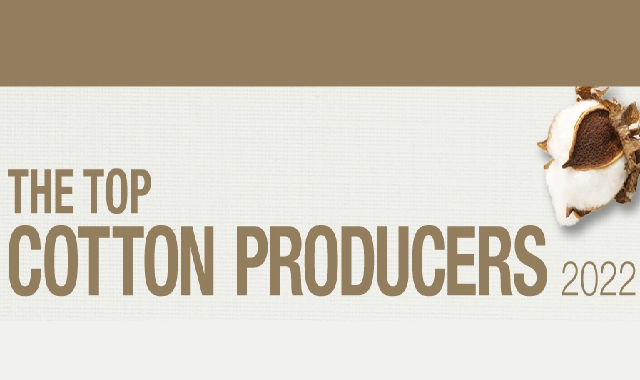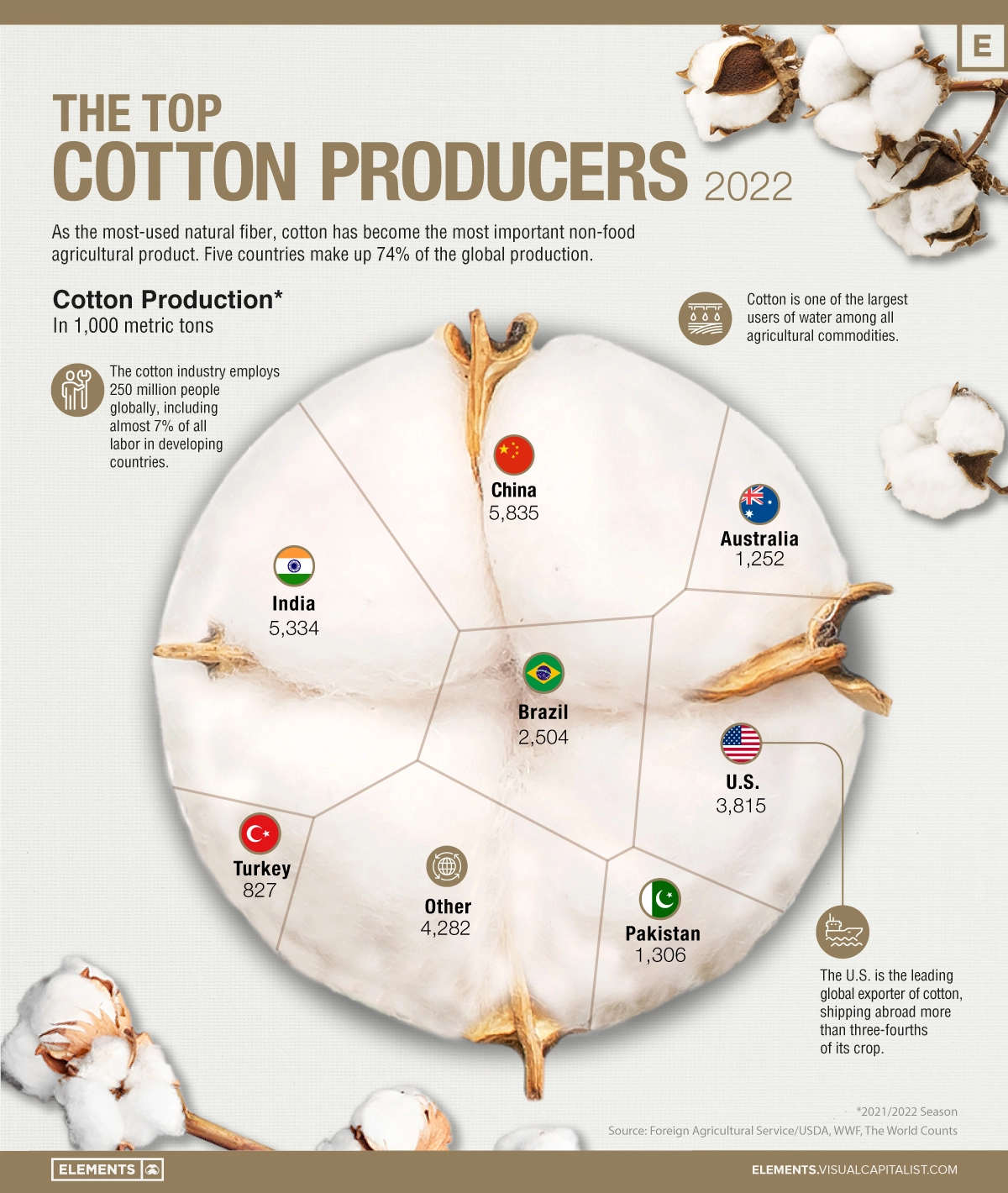We use cotton in our everyday lives. From clothes to coffee
strainers, cotton is used everywhere. One more cotton product that was widely
used after the spread of Covid-19 is a mask.
Cotton is the most used natural fiber and it has now become
the most important non-food agricultural product. At present, nearly half of
all fabrics need cotton fibers.
Using data from the United States Department of Agriculture,
this infographic lists top cotton producers from all around the world
Cotton: Fancy Fabric
The term cotton is originated from the Arabic word “quton,”
which means fancy fabric. Cotton is a staple fiber made up of short fibers
twisted together to form yarn.
The initial production of cotton started in India around
5,000 B.C. and today, around 25 million tons of cotton are produced each year.
At present, there are five countries that make up around 75%
of global cotton production. China is the biggest producer of cotton in the
world. It is accountable for over 23% of cotton production globally with
approximately 89 million cotton farmers and part-time workers. It is the
primary source for the Chinese textile industry and also for many other nation’s
textile industries.
|
Top Cotton Producers |
2020/2021 (metric tons) |
2021/2022 (metric tons) |
|
China |
6,445,000 |
5,835,000 |
|
India |
6,009,000 |
5,334,000 |
|
United States |
3,181,000 |
3,815,000 |
|
Brazil |
2,356,000 |
2,504,000 |
|
Australia |
610,000 |
1,252,000 |
|
Pakistan |
980,000 |
1,306,000 |
|
Turkey |
631,000 |
827,000 |
|
Other countries |
4,059,000 |
4,282,000 |
|
Total |
24,271,000 |
25,155,000 |
The biggest exporter of cotton globally is the United
States. It exports three-fourths of its crop and China as the top buyer.
Regardless of the importance that cotton has for the global
economy, cotton production has to face major sustainability challenges.
The Controversy over Cotton:
Among all agricultural commodities, cotton is one of the
biggest users of water. Also, the production of cotton involves applying
pesticides which is a threat to water and soil quality.
Other than this, cotton production often requires forced and
child labor. According to the European Commission, child labor in the cotton
supply chain is most common in Africa and Asia, where it comes from
small-holder farmers.
The U.S. apparel maker Patagonia stopped sourcing cotton
from the autonomous territory of Xinjiang back in 2020, as there were reports
about forced labor and other human rights abuses against Uighurs and other
ethnic minorities.
The parent company of Victoria’s Secret, L Brands, has also
taken a step to eliminate Chinese cotton from its supply chain. Whether these
changes in supply chains impact China’s cotton production and its practices,
cotton remains essential to materials found across our daily lives.
Infographic by: visualcapitalist


